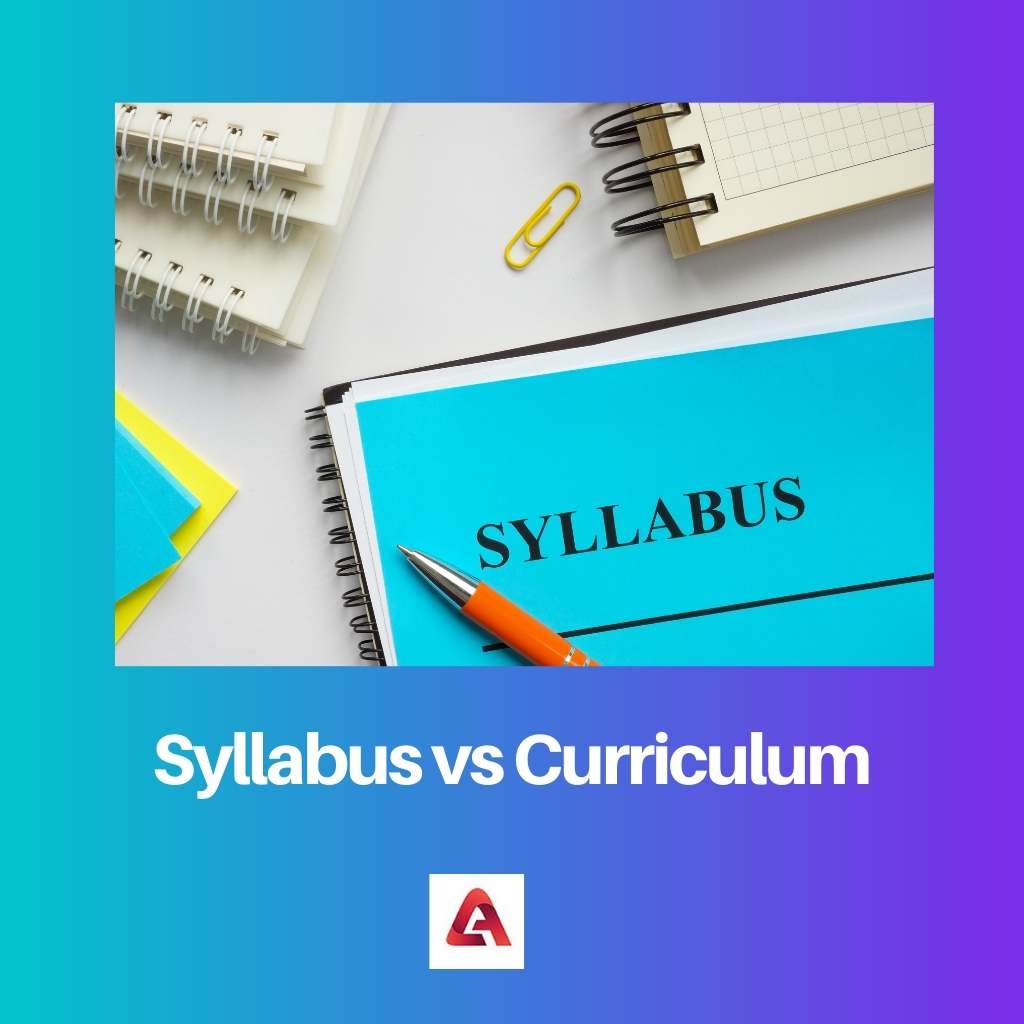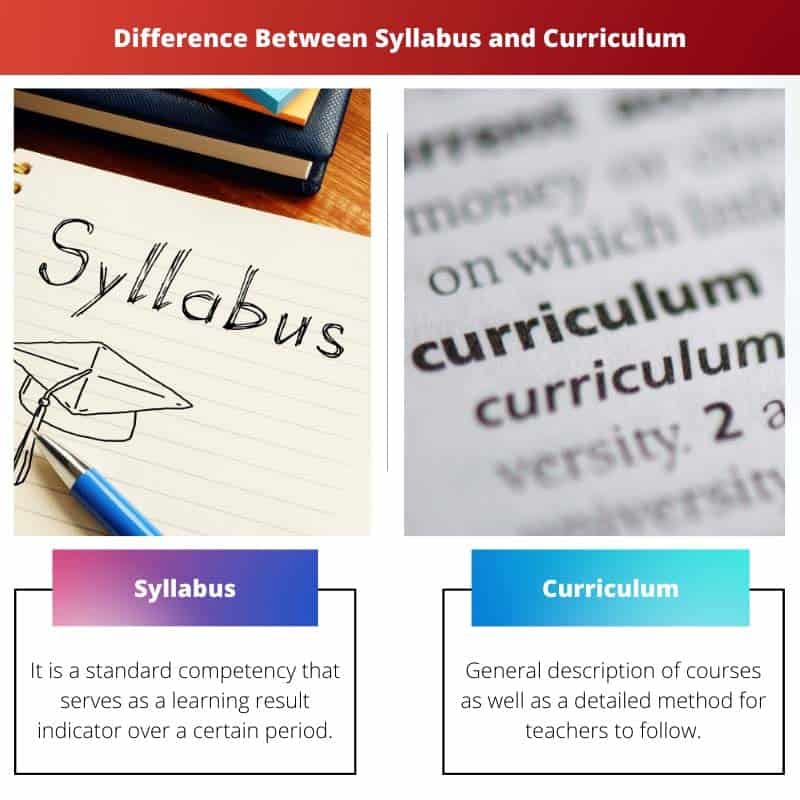The syllabus and curriculum are two distinct components that are both necessary in any education program. Education is a means of transmitting and acquiring knowledge.
It is the process through which society passes on its collected knowledge, values, and abilities from generation to generation.
An individual’s logic, intelligence, and judgment are all developed through this process.
Key Takeaways
- A syllabus outlines specific topics and content to be covered in a course, while a curriculum encompasses the entire educational experience.
- Teachers use the syllabus to plan lessons and assessments, while the curriculum guides overall teaching goals and objectives.
- Curricula promote broader learning goals, while syllabi focus on achieving course-specific outcomes.
Syllabus vs Curriculum
The difference between a syllabus and a curriculum is that a syllabus is a compilation of portions of a subject’s themes, whereas a curriculum is a compendium of subjects, principles, or actions that will be addressed in a classroom context. The syllabus is a list of topics that will be studied in class. The curriculum focuses on academic material and skill development.

A syllabus is a list of topics that will be taught and a synopsis of what will be covered. It outlines and summarises what pupils should be taught. Individual teachers create syllabuses rather than curriculums.
They may be tailored to match the needs of a certain class as educators make them.
A curriculum is a set of rules created to assist instructors in determining the content of a course. The curriculum specifies the course objectives, topics, and teaching techniques to be employed.
As a consequence, it clarifies why a particular subject or topic is being taught at a school or university.
Comparison Table
| Parameters of comparisons | Syllabus | Curriculum |
|---|---|---|
| Definition | It is a standard competency that serves as a learning result indicator over a certain period. | General description of courses as well as a detailed method for teachers to follow. |
| Origin | Greek term | Latin term |
| Nature | Descriptive | Prescriptive |
| Approaching scale | Used on a smaller scale | Globally decided |
| Who prepares it | Made on the individual level, by subject teachers. | Made by government or administration of institution of college and schools. |
| Duration | For a year or less. | Till the end of the course. |
| Applied on | Students | Educators |
What is Syllabus?
Simply put, a syllabus is a document containing information on the many subjects or portions of a subject or course that must be addressed.
The board of examinations decides on this document, which many academics prepare.
While developing a syllabus, educators guarantee that the fundamentals of a course or program are presented in a unique blend of theoretical and practical learning methodologies.
A syllabus is provided to the students and lecturers at the beginning of each academic year.
A syllabus is a comprehensive program overview given in class that contains specifics such as projects, tasks, test dates, and subjects to be covered, among other things.
Subject teachers decide on the quality and quantity. The syllabus serves as a guide for all students, which is why it is distributed in physical copy at the start of each session.
A tangible copy of a syllabus emphasizes the subject’s importance.
The syllabus tells students what they’ll study and why it is necessary. It’s also straightforward for any student to determine how much content they need to cover before their examinations.
At the end of the session, the instructor can assess each student’s performance using the syllabus.
What is Curriculum?
A curriculum is a set of criteria for the numerous academic themes and disciplines covered in an institution or university’s program.
It does, however, address the mindset, manner, understanding, conduct, productivity, and other abilities that students will gain over the course of the academic year.
In most cases, educational institutions or the government meticulously prepare and construct a curriculum.
It strongly focuses on pupils’ intellectual and physical growth by prioritizing the total learning opportunity given by a course.
It focuses on the student’s whole growth. It is the breakdown of concepts into a well-planned and structured presentation format while keeping efficacy metrics in mind.
Curriculum activities include all aspects of university or school life, such as student behavior, knowledge, performance, and ability.
Teaching techniques, lessons, physical and mental health, projects, presentations, assessments, test series, learning objectives, and so on are all included in the curriculum.
A student will follow a guided overall learning program throughout the class.
For every institution, it is a one-time commitment that will be followed for years. It represents a broad philosophy of education.
It is created with the general improvement and growth of average and below-average pupils in mind.
Main Difference Between Syllabus and Curriculum
- A syllabus is more descriptive and flexible and can be covered in a non-prescriptive way, whereas a curriculum is prescriptive in nature since its framework must be followed exactly.
- A curriculum is used in every school or institution to preserve student discipline, whereas a syllabus is solely used to study and improve thinking abilities.
- Each instructor is permitted to construct their own syllabus for their particular subject. The curriculum is followed by all instructors in the same way.
- A curriculum covers a broader range of topics than a syllabus. This is because a syllabus is limited to a single subject, but a curriculum serves as a basis for the whole course.
- While the syllabus is only valid for a year, the curriculum spans the whole course.
- The curriculum covers all courses and describes how they will be taught over the semester, whereas the syllabus is a more comprehensive version of each subject covered.






